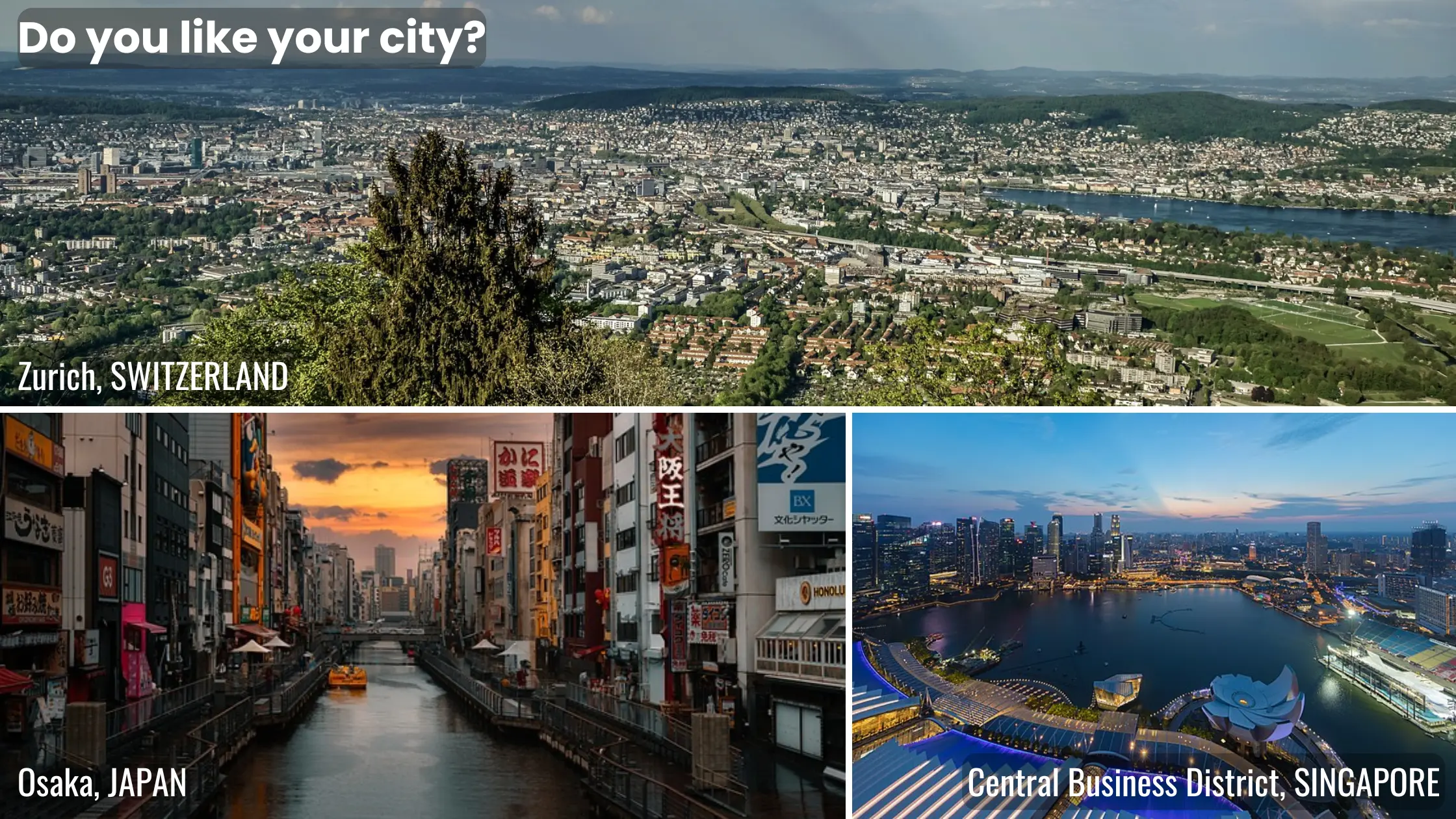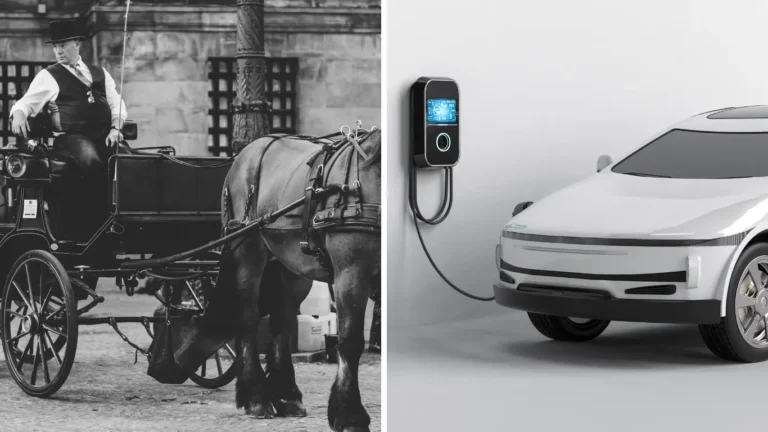INTRODUCTION
Modern urban cities are smart, but are they livable? Cities nowadays often provide luxurious services like urban infrastructure, mobile based cab services, rapid transport, shopping malls, and towering housing complexes. But, is it really all there is to modern life? Do our cities provide basic amenities like a clean and healthy environment? Are they free from air pollution, traffic, carbon emissions? What about the quality of life? Do we truly lead a happy, joyful, and successful life, and get the opportunity to spend time with our loved ones? If not, then our cities may be smart, but they aren’t really livable.
WHAT IS LIVABILITY?
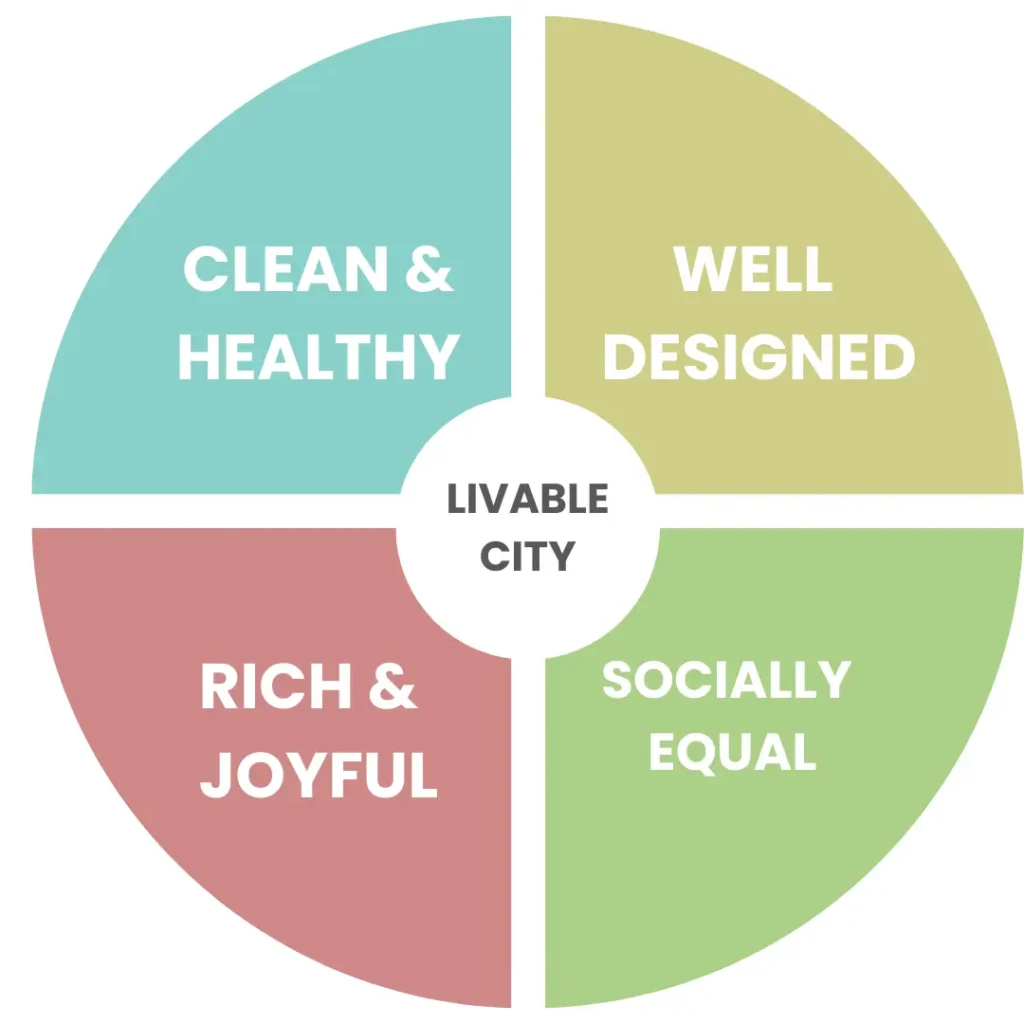
Livability is the degree to which a place is good for living. In general terms, it means that the place where we live should be healthy, clean, green, prosperous, and provide a good quality of life that enhances our well-being & lived experience. Livability is characterized by a smart & natural city design that provides basic amenities like good air, access to sanitized water, affordable housing, walkways & parks, and a peaceful neighborhood. The livability of a place is also determined by factors such as access to healthcare, quality education, economic opportunities, social equality, and a thriving culture. The concept of Livability is based on the idea that city and human scapes should not just be ‘smart’ and ‘urban’ but actually livable: A place of haven fostering individual, community, and environmental growth where each element in the ecosystem thrives in a harmonious symbiosis.
WHAT MAKES A CITY LIVABLE?
Livability has no single definition as individuals and communities all over the world have diverse taste, interests, lifestyles, and cultural practices. It is impacted by historical, natural, cultural, educational, intellectual, ideological, and political factors. Thus, there is no universal academic consensus on livability and definitions vary according to institutional preferences. However, the underlying idea is simple – The city should be livable & enhance the quality of life by adding meaning & happiness. It’s directly connected to physical, mental, and emotional well being of individuals and community and fosters a communal life giving equal opportunity to all.
GLOBAL LIVEABILITY INDEX RANKINGS
Livability index is a metrical score of a city calculated by rating specific areas & categories that influence quality of life. One of the most influential assessments is published annually by The Economic Intelligence Unit (EIU) & it’s called the Global Livability Index.
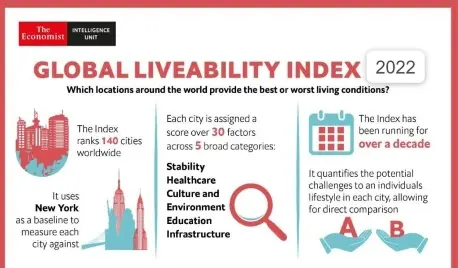
The EIU calculates the livability score of a city on the basis of various factors like healthcare, culture, environment, education, & infrastructure. These categories are further subdivided into indicators like access to private & public healthcare, prevalence of petty crime, cultural availability, quality of education, public transport, etc. They are scored in the range of acceptable, tolerable, uncomfortable, undesirable, or intolerable.
Each year, the EIU calculates the score to rate various livable aspects of a city & ranks 172 cities in the Global Livability Index. Check out the top 10 and bottom 10 cities from the list.
WHAT ARE LIVABLE CITIES?
So, basically, livable cities are cities which feature these aspects like clean environment, natural landscapes, affordable housing, urban planning, practical city design, policy support, public consensus, infrastructural & technological advancements, & equal access to healthcare, education, and cultural activities.
Presently, the concept of livable cities is more of an idea than reality, but there are truly some livable cities as reported in the Global Liveability Index, and many are striving hard to up the standards. The Sustainable Development Goals (SDGs) provided by the United Nations also opens up avenues from government & people to build more wholesome cities. Everyone, irrespective of their identities, beliefs, race, case, class, gender, or religion should have access to basic human rights.
MAJOR PROBLEMS IN CITIES
Modern urban cities feature many prominent feats like towering buildings, dense public networks, crowded markets, and digital connectivity. But they fail to provide the most basic and fundamental requirements for life to thrive. The 21st century may have skyrocketed the technological status of human beings, but it falls short on primal requirements like clean air, happiness, work-life balance, or a rich cultured life. Here are some of the major reasons that make cities unlivable.
Air Pollution
A primary cause for creating unpleasant, hazardous, and toxic living conditions is poor air quality index.
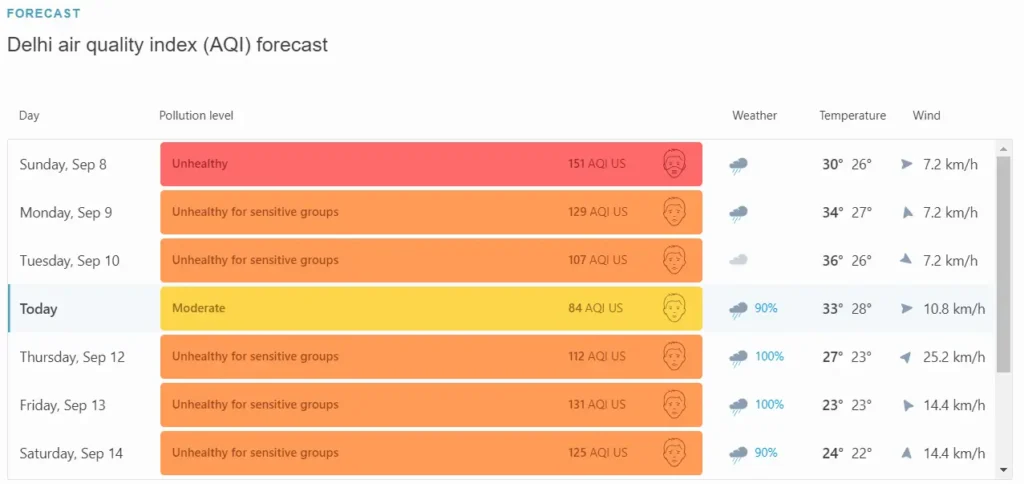
Human activities like industrial manufacturing, city traffic, everyday greenhouse gas emissions, and air conditioning, have a compounded effect on the environment, severely deteriorating the air quality. The air quality can be measured in AQI and Ppm which determines the health of the air we breathe in and out. According to a report, air quality has decreased dramatically since 1950. Perhaps it’s the curse of the modern individual who has the knowledge of the whole world at his fingertips but can’t take a second out for a cycle of some good deep breaths.
Also read: Visually represented AQI report snapshot.
Good air quality can be directly connected with the quality of overall life. It affects not just human beings but also harms natural beings like Trees, plants, flowers, animals, birds, bees, and insects. As human society becomes more & more distanced from nature, it’s no wonder that air quality is deteriorating severely. Consequently, urban landscapes feature less and less natural life.
The presence of good quality air is fundamental to life and no city can be truly livable until it’s air is clean!
Heat Island Effect or Surface Temperature

The average temperature in cities and metropolises is much higher than nearby rural areas and wildlands. This affects water bodies, plant life, insect ecosystem, animals, birds, and major human activities. The phenomenon is also known as Heat Island Effect.
Most of the urban landscape is made up of asphalt, concrete, glass, steel, & aluminum in objects like buildings, panels, roads, cooler, vents, and railways. These elements absorb heat & sunlight instead of reflecting it, thus growing hotter. Compared to them, natural surroundings like grass, lawns, bushes, plants, and trees keep the surrounding cool as they don’t absorb the heat & provide additional shades as well.
The skyscrapers, asphalt wide-roads, glass facades, & heavily metallic character of city architecture results in the formation of a microclimate that’s polluted & hotter than nearby areas. Thus water bodies like pools, lakes, and even rivers dry up, plants fade away, and birds & animals face harsh living conditions.
Hot cities are dangerous for the climate as they emit a high volume of greenhouse gasses (GHGs). Higher temperature results in increased energy consumption as human activities rely more on air-conditioning technology & end up releasing methane and carbon into the environment.
A livable city should be much cooler than its unlivable counterpart. This means it should be dense with natural areas, constructed with eco-friendly elements that absorb less heat. The city climate should cultivate & nurture the ecosystem instead of destroying it.
Traffic Congestion
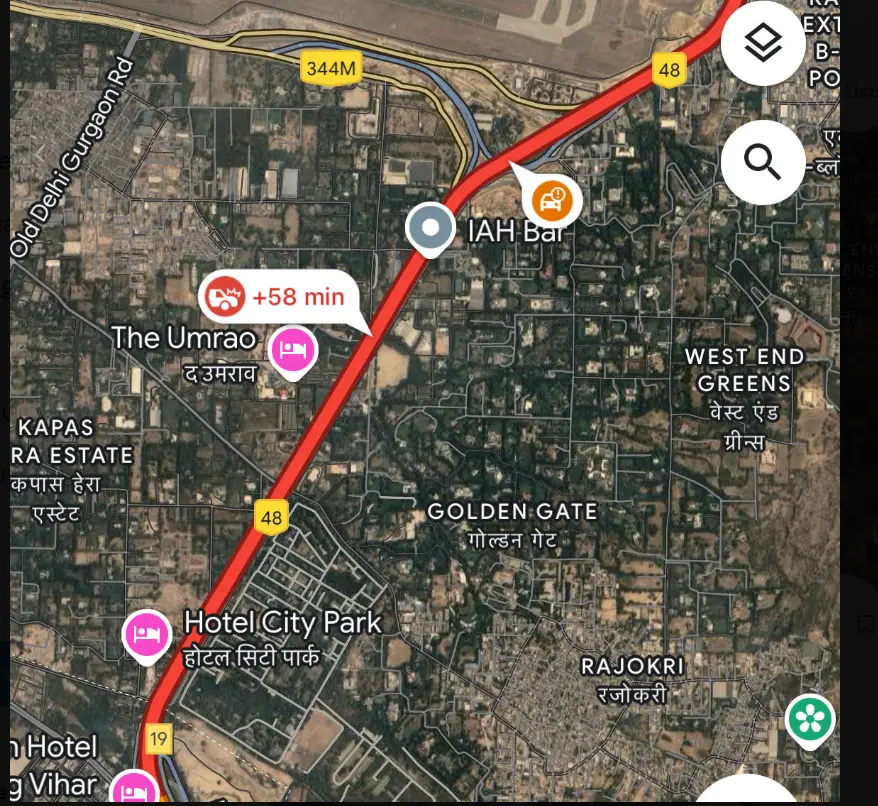
In the 21st century modern life, everything is ultra fast, except for one thing – city traffic. In various Indian cities like Gurugram, Mumbai, & Bangalore, traffic can be so excruciatingly slow that it can take more than 1-2 hours to move around even a radius of 5-7 km.
Traffic congestion & jams can occur due to many reasons, but in cities they are chiefly caused by poor design, faulty signage, and improper civil behavior. The highways, roads, lanes, and bridges are often organized haphazardly resulting in lane-less driving, confusions, traffic merging, and other terrible blockages. Furthermore, citizens can flout basic rules to go wrong-side, skip lanes, jump lights, and even cut across undrivable lands. Thus, an average citizen can end up commuting 2-3 hours (even 5-6 on a bad day) in city traffic.
City traffic doesn’t just result in anger, frustration, road rage, timeloss, & endless honking competitions – it also contributes magnificently to GHG emissions as air-conditioned vehicles remain on the road for hours & hours.
Work-Life Balance

As the corporate culture ups its game, and more & more startups push the boundaries to breaking point, maintaining a work-life challenge can feel like an impossible dream for an average citizen. Between juggling work emails, calls, clients, banking, and domestic chores, individual & community well-being is severely affected by the dearth of time. The demands of the ultra-fast, 24/7 connected, and digitally overloaded lifestyle leaves a lot of people feeling empty, frustrated, exhausted, and suffering from mental or emotional sickness.
When the city life tips the scale towards material & economic development by squandering love, happiness, and quality time spent with friends, it automatically becomes an unlivable place. The overall well-being of human life and society is the chief feature of a livable city. A city design, culture, and community that fosters a healthy living environment is fundamental to life. Thus, maintaining work-life balance is crucial to enjoy life in all its glory.
CONCLUSION
Even though, livable cities may seem like a fantastical idea, they can be achieved. UN’s SDGs, current climate crisis, individual & community action has prompted government, muncipalities, corporations, and citizens to be more aware about pressing issues. The creation of livable city is a primal responsibility as an inhabitatnt of the planet. It will not only increase the quality of human life, but also nurture environmental growth by supporting natural ecosystems. It’s a step upward in the quest to build a cleaner, healthier, just, and natural planet that’s home to all.
Livable cities can be achieved with a harmonious participation of individuals, communities, government, and private companies. Even a local citizen can contribute by identifying every-day pain points such as common traffic congesition spots and raising the issue.
Furthermore, social media & digital mediums can be employed to highlight problems and initiate conversation and achieve public consensus. Artistic expressions, practical designs, and modern cultural practices can also influence the growth of livable city. Ultimately, a dream as big as a city involves participation from not just one, but all the members of the society. Thus, by practical methods & collective action, one can enjoy the experience of residing in a livable city.


